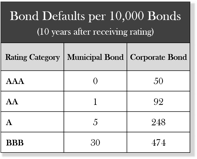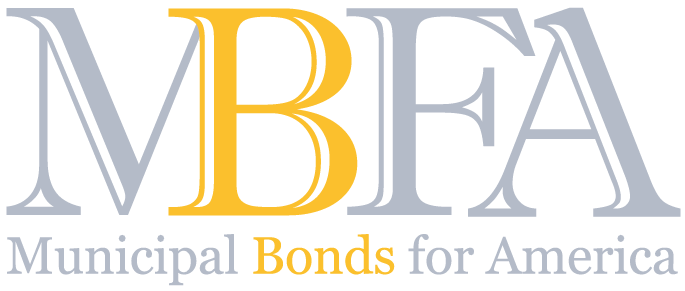BONDS BUILD AMERICA
What is a municipal bond?
A municipal bond is a type of debt instrument issued by nearly 42,000 state or local governments (or governmental entities, such as water and sewer districts or airport authorities) to raise capital. In the last decade, more than $2 trillion of new infrastructure investments were financed with municipal bonds. Data suggest that $2 trillion to $3 trillion in new investments will be financed with municipal bonds – if their tax status is not changed – in the next decade. Municipal bonds are generally considered safer investments, and the bond market itself is stable and well regulated. In exchange for their capital investment, a municipal bond owner receives periodic interest payments – generally twice a year – and is repaid principal when the bond matures. Municipal bond interest paid to municipal bondholders is generally exempt from federal income tax (just as Treasury bond interest is exempt from state and local tax). This exclusion dates to the 1800s and was incorporated into the modern income tax when it was created in 1913. Private activity bonds are a type of municipal bond used to finance certain qualifying public-private projects. Interest on qualified private activity bonds is exempt from the federal income tax, but can be subject to the Alternative Minimum Tax.What are the economic benefits of financing with municipal bonds?
- Municipal bonds generally finance investments in fixed infrastructure, not ongoing expenses (such as salaries or government benefits).
- These investments include: schools; acute care hospitals; roads, highways, and bridges; airports; subways; seaports and marine terminals; water and wastewater facilities; multi-family housing; libraries and town halls; electric power and natural gas equipment for city-owned utilities; and other public projects.
- $2 trillion – the amount of infrastructure investment financed with tax-exempt municipal bonds in the last decade. 1
- Nearly two-thirds of the nation’s core infrastructure is financed with municipal bonds. 2
Who buys municipal bonds?
- About 72 percent of bonds are owned by individuals directly or through mutual funds and the like.
- Three-fifths by investors over the age of 65. 3
- Roughly 40 percent of municipal bond interest is paid to households with income of less than $200,000. 4
- About 25 percent of bonds are owned by businesses, primarily property and casualty and life insurance companies, but also banks.
Why do investors buy municipal bonds?
- Investors purchase municipal bonds because of the stability of the municipal bond market.
- State and local governments have issued bonds for centuries – they are a well-known and well – regulated financial instrument.
- Municipal bonds are an extremely safe investment.
- The 40-year default rate for corporate bonds is higher than 11 percent; but

- The 40-year default rate for municipal bonds is just 0.13 percent; 5 and
- Not a single AAA-rated municipal bond defaulted during that time.
- The 40-year default rate for corporate bonds is higher than 11 percent; but
- The exclusion of interest from federal income tax provides tax savings to investors.
- However, investors accept a lower rate of return on the bond in exchange for the benefit of the tax exclusion, reducing or eliminating any tax “windfall.”
What are the financial benefits of financing with municipal bonds?
The strength of issuers, stability of the bond market, and the federal tax exclusion of bond interest reduce borrowing costs for state and local governments.- In the last decade, municipal bond-financed projects cost $495 billion less than if they had been financed with taxable debts. 6
- Lower borrowing costs for bond-financed projects:
- Allow for greater investments;
- Reduce tax and utility rates for residents; and
- Help create jobs and economic growth.
How do bonds promote fiscal responsibility?
- Bonds are approved by voter referendum or an affirmative vote of a governmental body (a city council, county council, utility board, or the like).
- Principal and interest are paid by state and local residents.
- Over the last decade, while federal debt has nearly doubled (both in real dollars and as a percent of GDP), state and local debt has remained stable. 7
- “Bond Buyer Thomson Reuters 2016 Yearbook,” Feb. 2016.
- Cong. Budget Office, J. Comm. on Taxation, Subsidizing Infrastructure Investment with Tax-Preferred Bonds, 2 (Oct. 2009).
- Internal Revenue Serv., Statistics of Income—2014: Individual Income Tax Returns, (2016)
- Id.
- http://www.fortpittcapital.com/municipal-bonds-returns-defaults-rates/ (last visited on Dec. 1, 2014).
- National Association of Counties et alia, Protecting Bonds to Save Infrastructure and Jobs, at 5 (2013).
- Board of Governors of the Federal Reserve, Flow of Funds Accounts of the United States, 101 (June 11, 2015).

